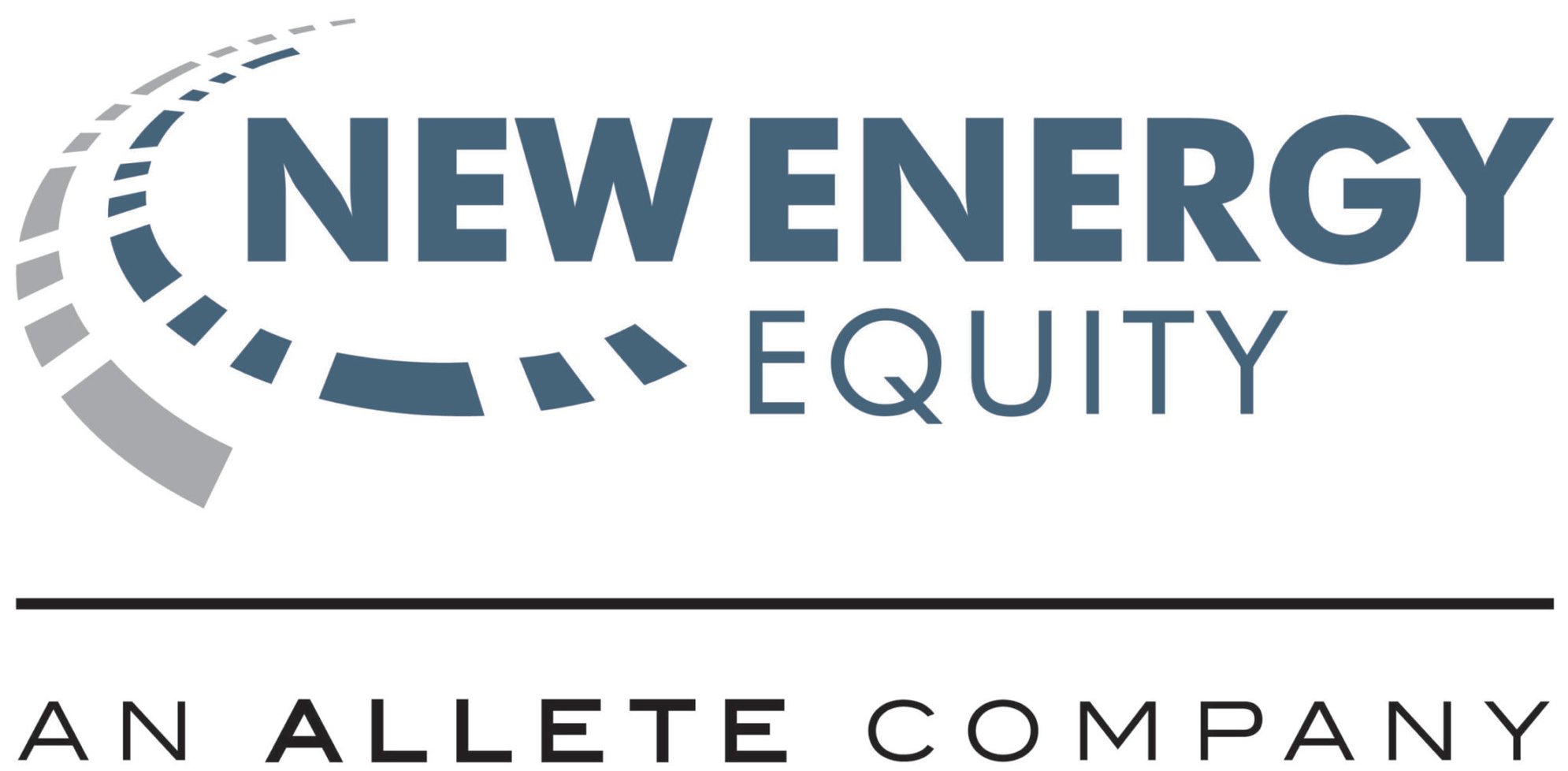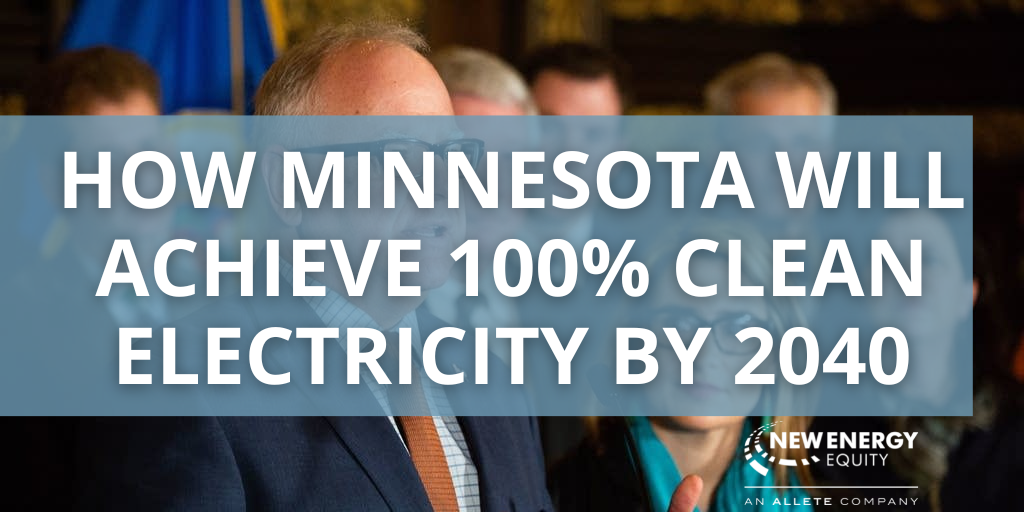New Energy Insights
- Home /
- New Energy Insights /
- How Minnesota Will Achieve 100% Clean Electricity by 2040
When I began my career working in Minnesota’s renewable electricity sector, I learned quickly that the best clean energy outcomes have been created by passing bold, state-level policies.
In particular, there have been two industry-defining laws responsible for shaping the state’s electricity mix for years:
- 2007’s Renewable Energy Standard1 that required 25% renewable electricity by 2025
- 2013’s solar legislation, which included a 10% solar goal by 20302 and established Minnesota’s nation-leading Xcel community solar program3.
As of February 2023, a third law is now taking center stage in Minnesota’s clean energy story: 100% Clean Electricity by 2040.

New Energy Equity’s Policy team (Eric Pasi, Kristen Peterson, Josh Anderson, Ian Santos-Meeker) attends the bill signing for the 100% Clean Energy law on February 7.
100% Clean Electricity by 2040
This new legislation, signed on February 7, 2023 by Governor Tim Walz, makes several updates to the state’s existing energy laws in order to accelerate the transition to 100% carbon-free electricity. The new 100% Clean Electricity law builds on the existing Renewable Energy and Solar Standards in Minnesota statue by (1) updating the existing “renewable” requirement such that at least 55% renewable electricity will be required by 20354, and (2) adding an additional “clean” requirement so that the following percentages of electricity sold by utilities must come from sources that do not emit carbon dioxide:
.png?width=1140&height=456&name=My%20project-1%20(5).png)
Who is affected by Minnesota’s New Law? (HF7)
Utilities: These new rules apply to various utility types across the state, including public utilities, cooperative utilities, municipal utilities, municipal power agencies, and power districts – although as listed above, some utilities have different timelines than others by which the 2030 clean electricity goal must be met4. Resources that qualify in the law as “eligible energy technologies” for the renewable standard include solar, wind, green hydrogen, certain hydroelectric sources, and various biomass fuels4. In addition to generating renewable electricity directly, utilities can also purchase Renewable Energy Certificates (RECs) to meet their requirements4. It’s also important to note that under the clean electricity portion of the law, nuclear power qualifies toward meeting the carbon-free standard4. Of course, all the folks here at New Energy Equity are most looking forward to building as many solar projects in Minnesota as possible to help meet our new state goals!
Minnesota’s Solar Job Market: There are also several provisions in the new law that require the Public Utilities Commission to consider local job impacts in their decision-making, prioritize creating construction employment opportunities for local workers, and consider impacts on environmental justice areas4.
Realistic Expectations and What's Next:
There are a few provisions in the law that allow for “off-ramps” in case future circumstances cause the transition to 100% clean electricity to become too difficult or costly. For example, if electricity prices are becoming unaffordable or the pace of the transition is expected to trigger grid reliability issues, the Public Utilities Commission has the authority to weigh relevant factors and allow the utilities to adjust their plans accordingly4. But if history is any indication, this wave of clean electricity is only just getting started.
A decade ago, many people were questioning how much solar the electric grid could really take on, but Minnesota’s 2013 solar legislation helped surpass all expectations for solar. Not only did the community solar bill create a nation-leading 800+ MW program and further solidify our homegrown solar industry, but this occurred while prices for solar were plummeting over the course of a few short years. This trailblazing legislation combined with the market forces of the time to create the nearly 5,000 quality solar jobs we have in Minnesota today5, and we expect that the trajectory of the new 100% clean electricity law will be much the same.
New Energy Equity is proud to have been a part of Minnesota’s solar growth over the last decade, and we look forward to working with building owners, farmers, and utilities across the state in the years to come to meet and exceed Minnesota’s new clean electricity requirements by 2040.
Stay up-to-date with New Energy Equity by joining our mailing list.

